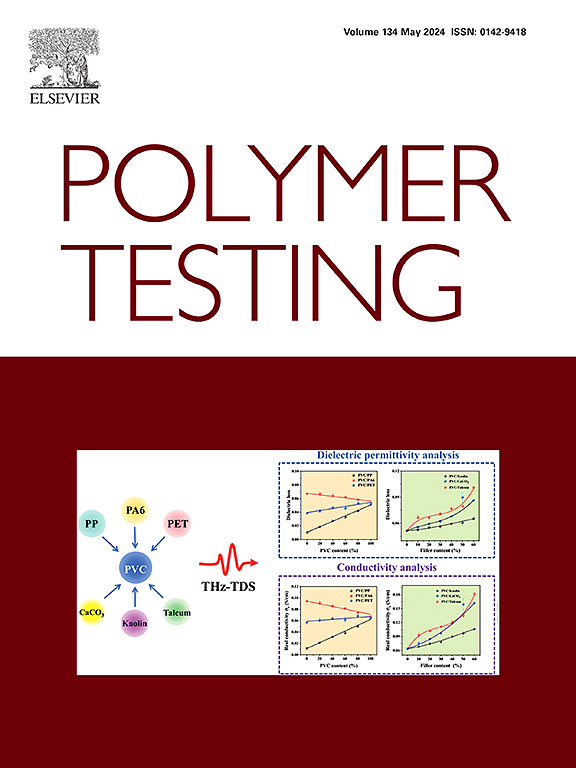Enhanced oxidation resistance of polyphenylene sulfide using organic–inorganic composite antioxidant via melt blending
IF 5
2区 材料科学
Q1 MATERIALS SCIENCE, CHARACTERIZATION & TESTING
引用次数: 0
Abstract
Polyphenylene sulfide (PPS) has become the primary material for controlling gas emissions at high-temperature; however, the oxidation reactions of sulfur within PPS macromolecules can deteriorate the mechanical properties. In this study, to enhance the oxidation resistance of PPS, composite antioxidants were introduced. Composite antioxidants (GO-sHP) were prepared by chemically grafting semi-hindered phenol antioxidants (sHP) onto graphite oxide (GO) layers and then melt-blending them with PPS resin. The grafting of sHP onto the GO surface was achieved through esterification, which enhanced the thermal stability of GO. The resulting GO-sHP exhibited partial exfoliation and a uniform distribution within the PPS matrix. Owing to heterogeneous nucleation, the introduction of GO-sHP significantly enhanced the crystallinity (from 24.4 % to 59.9 %), crystal perfection and tensile properties (from 88.25 MPa to 97.55 MPa) of PPS. The thermal decomposition residue of PPS increased from 45.1 % to 50.8 % and the dynamic oxidation induction temperature of PPS was also significantly improved (increased by 18.1 °C) by the addition of GO-sHP. Moreover, lower chromatic value changes (from 8.25 to 0.95), higher tensile strength retention (from 94.59 % to 98.57 %) and greater C–S bond content (from 10.9 % to 54.4 %) were achieved after oxidation treatment. Additionally, the antioxidative mechanism of GO-sHP on PPS revealed that GO-sHP inhibits the formation of S=O bonds, retards the breakage of C–S bonds, eliminates the oxidative free radicals, and restricts the diffusion of free radicals and oxidizing substances within the PPS matrix.
求助全文
约1分钟内获得全文
求助全文
来源期刊

Polymer Testing
工程技术-材料科学:表征与测试
CiteScore
10.70
自引率
5.90%
发文量
328
审稿时长
44 days
期刊介绍:
Polymer Testing focuses on the testing, analysis and characterization of polymer materials, including both synthetic and natural or biobased polymers. Novel testing methods and the testing of novel polymeric materials in bulk, solution and dispersion is covered. In addition, we welcome the submission of the testing of polymeric materials for a wide range of applications and industrial products as well as nanoscale characterization.
The scope includes but is not limited to the following main topics:
Novel testing methods and Chemical analysis
• mechanical, thermal, electrical, chemical, imaging, spectroscopy, scattering and rheology
Physical properties and behaviour of novel polymer systems
• nanoscale properties, morphology, transport properties
Degradation and recycling of polymeric materials when combined with novel testing or characterization methods
• degradation, biodegradation, ageing and fire retardancy
Modelling and Simulation work will be only considered when it is linked to new or previously published experimental results.
 求助内容:
求助内容: 应助结果提醒方式:
应助结果提醒方式:


